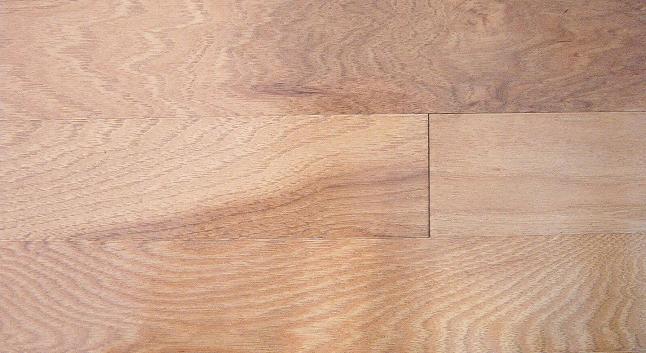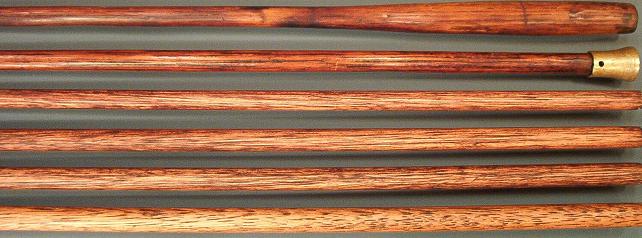Ramrods were normally made of Hickory because of its strength parallel and perpendicular to the wood grain and because of its ability to flex and return to its original shape. The ramming end of ramrods were either straight or flared or may have a tip made of brass or other material.
The photo below shows sections of Hickory wood:
Birch wood has characteristics similar to Hickory. Birch dowel rods are readily available in lengths of three to four feet and in diameters of 1/4, 5/16, 3/8, 7/16, and 1/2 inches. These dowel rods normally cost less than one dollar.
The photo below shows several ramrods. The top two ramrods are believed to be authentic. The first (top) ramrod is flared and is from a Double Barrel 12 Gauge Side by Side Percussion Shotgun made by SCOTT & Co. LONDON in the 1830's. The second ramrod has a brass tip and is from a Single Barrel 12 Gauge Percussion Shotgun having the Black Powder Belgium Liege Proof Mark of the 1830's.
Ramrods should be selected from wood where the grain runs parallel to the entire length of the wood. The lower ramrod in the photo above does not have the grain running completely parallel to the length and exhibits grain run out. This can be seen towards the left side of the photo where the growth rings of the wood are evident. This is an undesireable condition that can lead to a broken ramrod at the point of grain run out.
Ramrod length is normally that where it extends 1/2 inch beyond the muzzle when inserted into an empty barrel. This length is also normally that where it extends 1/2 inch before the muzzle when inserted into the ramrod holder.
The lower four ramrods in the photo above were made from dowel rods and finished to match the authentic ramrods. To accept stain properly, they were first thoroughly sanded with 60 grit sandpaper and then sanded lightly with 320 grit sandpaper. They were then stained with two applications of Minwax Red Mahogany (225) penetrating wood stain and finished in Boiled Linseed Oil. See Gun Stock Oil Finishing for Oil Finishing details.

